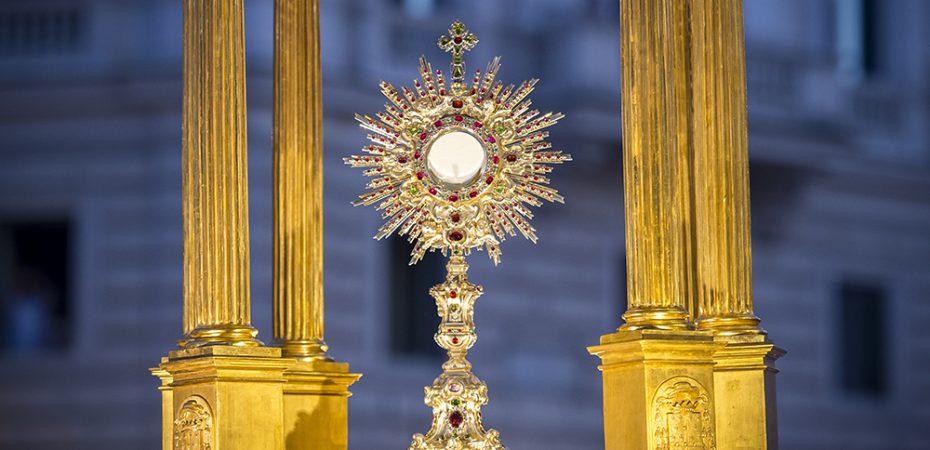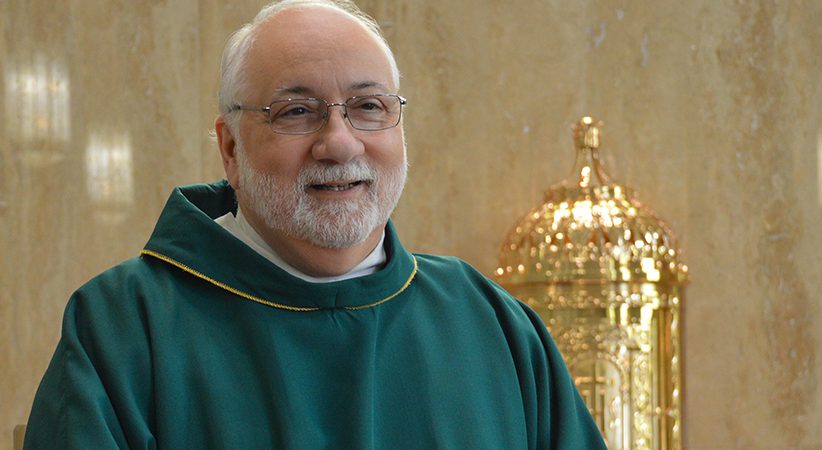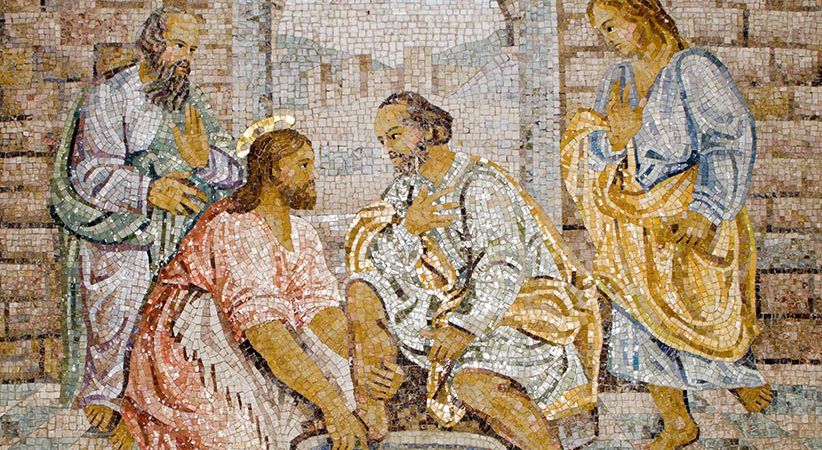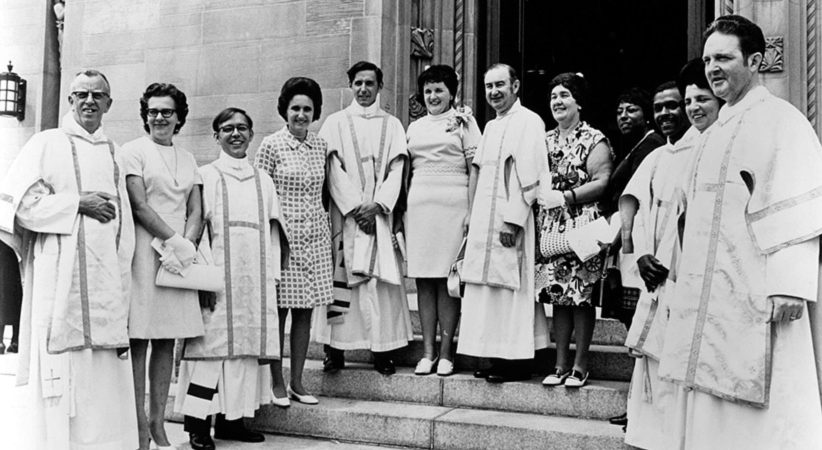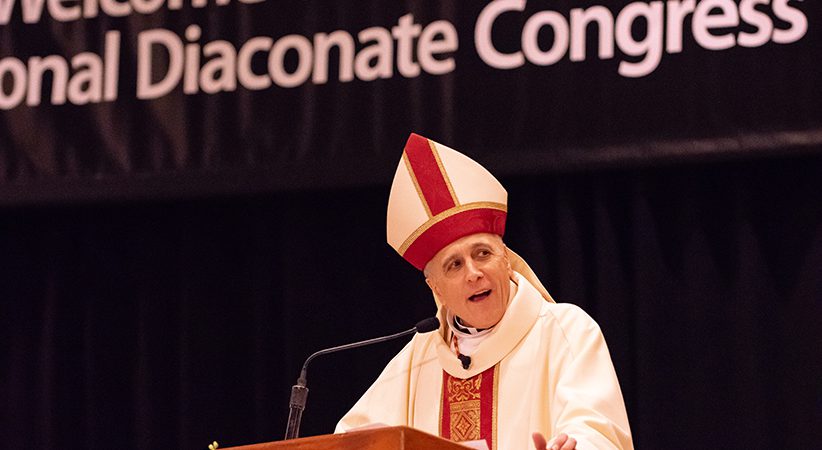Gazing Upon the Eucharist
How to preach during worship of the Eucharist outside of Mass
Father Thomas Dailey Comments Off on Gazing Upon the Eucharist
Known for his judicious use of words, Oliver Wendell Holmes once purportedly opined: “I would not give a fig for the simplicity this side of complexity, but I would give my life for the simplicity on the other side of complexity.” Hardly was the Supreme Court justice speaking about the solemn exposition of the Blessed Sacrament! But in his pithy pronouncement, we find helpful direction for how to preach during worship of the Eucharist outside of Mass.
Complexity confronts those who consider the theology underlying Eucharistic devotion. We may be stymied in our efforts to fully grasp the philosophy of “transubstantiation.” We may scratch our heads in wonder at the prospect that our living and glorious Lord is fully present — body and blood, soul and divinity — under the consecrated species of bread and wine. We may struggle to perceive in the host that Jesus is really present in a true and substantial manner.
We may not understand, yet still, we worship. We venerate the Lord in the Blessed Sacrament because we believe him to be present to us and with us there on the altar. A mystery to our minds, that presence remains at the heart and soul of our faith.
Given the complexity of that supernatural mystery, the one tasked with preaching during a solemn exposition may easily be tempted to craft a homily heavy on catechesis and/or apologetics, both of which have historical precedent. For example, following the Protestant Reformation, Catholic missionaries expanded the traditional Forty Hours devotion in theatrical ways that showcased faith in the Real Presence by flaunting it in public. Fast forward to our times, and the Pew Research Center indicating widespread doubt or denial about the Real Presence, even by professed Catholics, seems to call for a pulpit-powered response.
But here “the simplicity on the other side of complexity” beckons.
Simplicity of Adoration
Unlike a typical Sunday celebration of the Mass, those who worship at a Solemn Exposition of the Eucharist do have faith in the Real Presence. That is the very reason they are present! Consequently, there is little need for the homilist to expend energy on convincing them of what they already believe. As Pope Francis reminds all preachers: “we should never respond to questions that nobody asks” (Evangelii Gaudium, No. 155).
Instead, those called to preach on such occasions would better serve the faithful by acting as a devotional guide, helping them to undertake more deeply and effectively what they have come to do. Whether at a single celebration of Exposition and Benediction or at an extended devotion such as the Forty Hours, the homilist’s words should lead his listeners to the simplicity of adoration, in a contemplative gaze that strengthens their relationship with Jesus through their devotion to the Eucharist.
Idea, Sentiment, Image
If we take as an organizing principle Pope Francis’ claim that a good homily should have “an idea, a sentiment, an image” (Evangelii Gaudium, No. 157), then these elements can give structure to a homily fittingly crafted for Eucharistic exposition and effective at leading to true devotion.
First is the idea that calls forth consideration in the mind. The idea about which to preach is given by the liturgical celebration, namely worshipping Jesus’s Real Presence in the Eucharist. As mentioned, though, this idea befuddles the mind! Still, the homilist can instruct the congregation about this sacramental mystery without delving into any theological labyrinths.
Working from and through the scriptural texts that are proclaimed, the homilist can guide the faithful in their devotion simply by elaborating on what they believe. He could, for instance, focus on the Lord’s own words about being present as living bread, or on the Eucharist as the memorial of Christ’s sacrifice for the salvation of all. Likewise, the homilist could point out how, in this sacrament, believers see and receive the pledge of glory to come, or he could recall how the Eucharist remains the source and summit of the life of the Church. (For more on these ideas, see the Catechism of the Catholic Church, Nos. 1322-1405.)
Second comes the sentiment that seeks to inspire the hearts of the faithful. The faithful come to exposition not to learn about Jesus, but to worship him. As a result, the primary work of the homilist is to guide them to “see” Jesus truly present in their midst, to focus their gaze on this mysterious yet wondrous Sacrament, and to speak in a way that excites their affections for him who is exposed before them.
What is it that we sense when we gaze upon Jesus in the Eucharist? Do we see the depths of divine love hidden in the holy host? Do we see there the extent to which God abases himself for us, changing himself into food so that he may enter more intimately into our very lives? With these or other inspired words that penetrate souls and persuade hearts, the homilist should strive to engender a contemplative awareness of him who, in the Eucharist, is both gift and giver of eternal life.
Finally, the image emerges in what the faithful have come to do. Every homily, as an act of worship, intends to lead the assembly to give praise and thanks to God for the communion we share in the Paschal Mystery. But worship of the Eucharist outside of Mass highlights a specific liturgical action that is likewise a poignant religious image — adoration.
Motivating the Assembly
In motivating the assembly to adore Jesus Christ really present in the Eucharist, the homilist can emphasize the Christian value of being over doing, of simply being present to him who is supernaturally present to us. Focusing on this relational dimension to discipleship, the homilist can exhort the faithful to behold our Savior present on the altar and, as a result, to be open to the transforming power of grace uniquely given in this Blessed Sacrament.
The mode of Jesus’ presence there remains a complexity to human understanding. Nevertheless, the reality of it can be experienced by believers, through a homily that teaches what we believe, persuades us to see Jesus with the eyes of faith, and moves us to an act of adoration that places us, once again, in that loving relationship to which Our Lord invites us. In this way, the one who preaches during Solemn Exposition of the Eucharist will guide the faithful to gaze upon the one in heaven to whom they can give their simple trust as “the way, the truth, and the life” here below.
FATHER THOMAS DAILEY, OSFS, is a priest in the congregation of the Oblates of St. Francis de Sales and faculty member at Saint Charles Borromeo Seminary in the Archdiocese of Philadelphia, where he holds the John Cardinal Foley Chair of Homiletics and Social Communications.
…………………………………………………………………………………………………………………………………………………….
The need for Adoration
“The Church and the world have a great need for eucharistic worship. Jesus awaits us in this sacrament of love. Let us be generous with our time in going to meet Him in adoration and in contemplation that is full of faith and ready to make reparation for the great faults and crimes of the world by our adoration.” — Pope St. John Paul II, Dominicae Cenae, No. 3
…………………………………………………………………………………………………………………………………………………..

